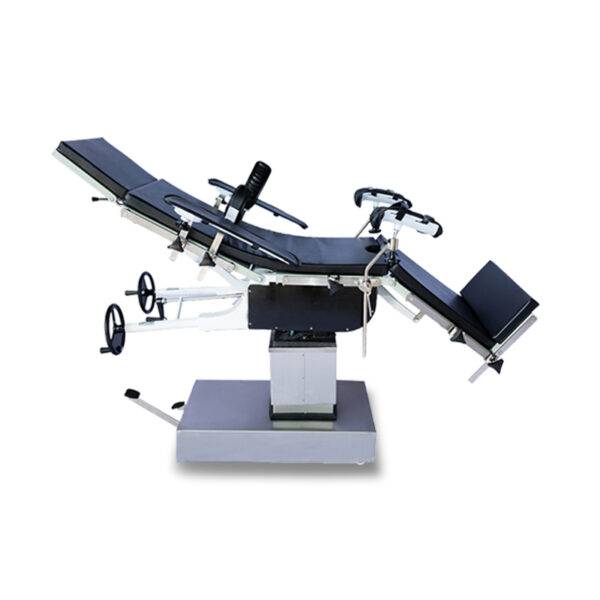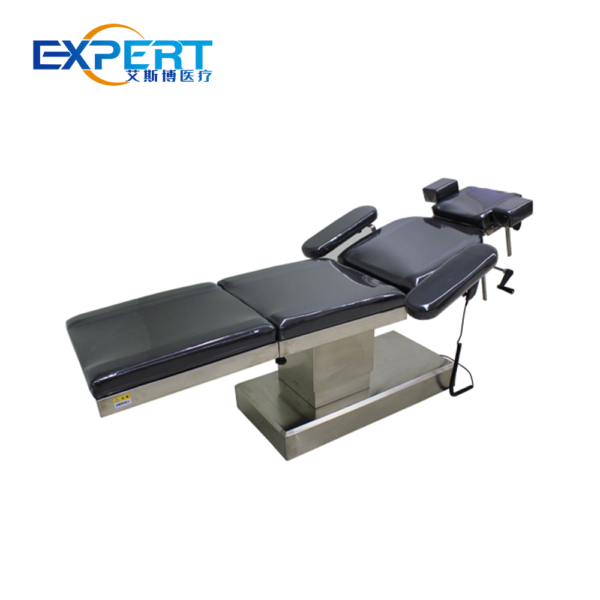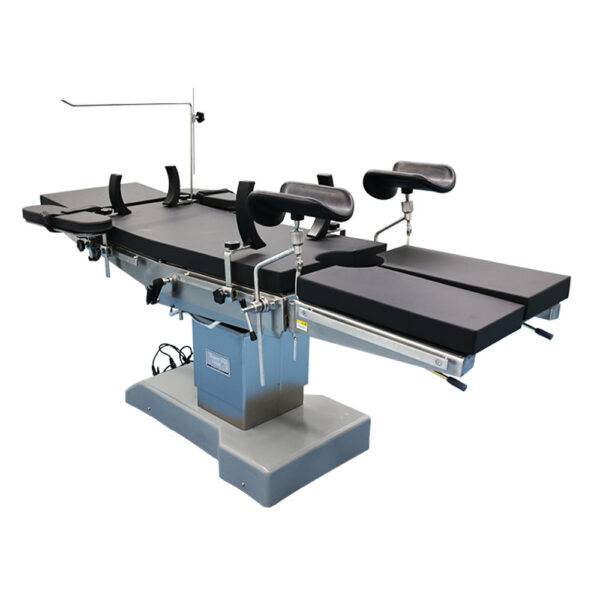Indirizzo
304 Il cardinale nord S.
Dorchester Center, MA 02124
Ore di lavoro
Dal lunedì al venerdì: 7:00 - 19:00
Fine settimana: 10:00 - 17:00
Benvenuti nel mio blog!
Prima di immergerci nei contenuti, mi piacerebbe che ti unissi a me sulle mie piattaforme social, dove condivido altre intuizioni, interagisco con la community e pubblico aggiornamenti. Ecco come puoi metterti in contatto con me:
Facebook:https://www.facebook.com/profile.php?id=100071234835011
LinkedIn:https://www.linkedin.com/company/74943205/admin/dashboard/
YouTube:www.youtube.com/@shandongexpertmedicalequip4695
TikTok:www.tiktok.com/@expertmedical
Ora, iniziamo il nostro viaggio insieme. Spero che tu trovi il contenuto qui perspicace, coinvolgente e prezioso.

Operating tables are a critical piece of equipment in any surgical setting. They are designed to support the patient during surgery and to facilitate the surgeon’s access to the surgical site. With advancements in medical technology, the variety of operating tables has expanded to cater to different surgical procedures and patient needs. This comprehensive blog post will explore the different types of operating tables available, their features, and help you understand which one might be the best fit for various surgical applications.
Operating tables play a vital role in ensuring patient safety and comfort, as well as in enhancing the efficiency of surgical procedures. They are designed to be adjustable, sterile, and compatible with a range of surgical instruments and equipment.
Different types of surgeries require specific features in an operating table. For instance, orthopedic surgeries often necessitate tables that can support heavy equipment and allow for complex positioning, while neurosurgeries may require tables with a higher degree of stability and precision.

-600x600.jpg)

.jpg)





These are the most basic type of operating tables. They offer a stable and flat surface for surgery but lack the adjustability and features of more advanced models.
Hydraulic tables use a fluid mechanism to adjust the height and angle of the table. They are known for their smooth and precise adjustments, which can be crucial in surgeries requiring fine control over patient positioning.
Electric tables offer even greater adjustability than hydraulic ones. They can be programmed to move in specific ways and can often be controlled with a remote, providing surgeons with a high level of precision and flexibility.
Specialty tables are designed for specific types of surgeries. For example, orthopedic tables often have attachments for holding and manipulating limbs, while neurosurgery tables may have a headrest designed for cranial surgery.
To help you better understand the differences between these types, let’s look at a comparative analysis in the form of tables.
| Caratteristica | Fixed Operating Tables | Hydraulic Operating Tables | Electric Operating Tables | Specialty Operating Tables |
|---|---|---|---|---|
| Regolazione altezza | Limitato | SÌ | SÌ | SÌ |
| Angle Adjustment | NO | SÌ | SÌ | Yes, Specific to Procedure |
| Programmability | NO | NO | SÌ | SÌ |
| Sterilizzabilità | SÌ | SÌ | SÌ | SÌ |
| Patient Weight Capacity | Standard | Standard to High | Alto | High, Specific to Procedure |
| Caratteristica | Fixed Operating Tables | Hydraulic Operating Tables | Electric Operating Tables | Specialty Operating Tables |
|---|---|---|---|---|
| Motorized Sections | NO | NO | SÌ | SÌ |
| Attachment Points for Instruments | Limitato | Limitato | SÌ | Yes, Specific |
| Compatibilità delle immagini | NO | NO | SÌ | SÌ |
| Integrated Power Sources | NO | NO | SÌ | SÌ |
| Custom Positioning Programs | NO | NO | SÌ | SÌ |

Let’s examine a few case studies to illustrate how different types of operating tables are chosen for specific procedures:
Chirurgia ortopedica: An orthopedic table with motorized sections and attachment points for limb manipulation was used to perform a complex joint replacement surgery.
Neurochirurgia: A neurosurgery table with an integrated headrest and imaging compatibility was selected for a delicate brain surgery, ensuring the utmost stability and precision.
Chirurgia generale: A hydraulic table with smooth adjustments was chosen for a general surgery procedure where the patient needed to be repositioned several times throughout the surgery.
With the variety of operating tables available, selecting the right one for your surgical needs is essential. Whether you require a fixed, hydraulic, electric, or specialty operating table, understanding the features and capabilities of each type will help you make an informed decision. Investing in the right operating table can enhance surgical outcomes, improve patient safety, and increase the efficiency of your operating room. As medical technology continues to evolve, so too will the options available to surgeons and healthcare providers, ensuring that the best possible care can be delivered to patients.
What are the key differences between hydraulic and electric operating tables?
Hydraulic tables offer smooth and precise adjustments through a fluid mechanism, while electric tables provide even greater adjustability and can be programmed for specific movements using a control system.
Are specialty operating tables more expensive than standard ones?
Generally, yes, specialty operating tables are more expensive due to their specialized features and attachments designed for specific surgical procedures.
How often should operating tables be serviced?
Operating tables should be serviced regularly according to the manufacturer’s recommendations to ensure they remain in optimal working condition.
Can operating tables be customized?
Yes, many manufacturers offer customization options to meet the unique needs of different surgical procedures and preferences of the surgical team.
What are the most important factors to consider when purchasing an operating table?
The most important factors include the type of surgeries that will be performed, the available space in the operating room, the table’s adjustability and programmability, and the budget.
